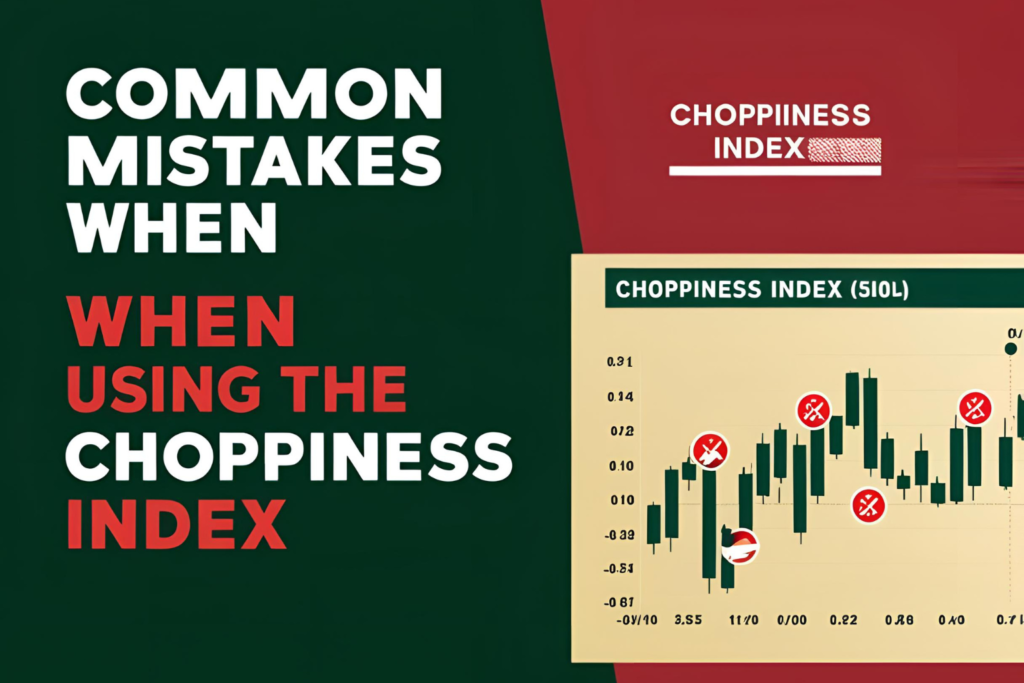Introduction
The Choppiness Index is a valuable indicator for identifying market conditions, but it’s often misused by traders who expect directional signals or rely on it in isolation. This post outlines the most common mistakes traders make and how to avoid them.
1. Mistaking Choppiness Index for a Trend Direction Tool
Mistake:
Traders often assume a low reading means “bullish” and a high reading means “bearish.”
Reality:
The Choppiness Index shows whether a market is trending or ranging, but not the direction. You still need other indicators or price action to determine if the trend is up or down.
2. Using It Alone Without Confirmation
Mistake:
Relying solely on the Choppiness Index to decide trade entries or exits.
Solution:
Pair it with:
- RSI or MACD for momentum
- Moving averages for trend direction
- Support/resistance zones for confirmation
3. Using Default Settings on All Timeframes
Mistake:
Applying the standard 14-period setting without adjustment for day trading or swing trading.
Tip:
- Use 5–10 periods for scalping/day trading
- Stick to 14+ periods for swing or long-term trades
Test on your preferred timeframe for optimal results.
4. Overtrading in Choppy Markets
Mistake:
Entering trades even when the Choppiness Index is signaling sideways action.
Fix:
Avoid trades when the index is above 61.8. Focus on trending setups when the value is below 38.2.
5. Ignoring Alert Setup or Visual Cues
Mistake:
Not setting visual boundaries or alerts on the chart for key levels.
Pro Tip:
Draw horizontal lines at 38.2 and 61.8, and use alerts to know when a market transitions from choppy to trending or vice versa.
Checklist to Avoid Mistakes
✅ Understand that it measures trend strength, not direction
✅ Customize settings for your timeframe
✅ Combine with trend/momentum indicators
✅ Avoid trades in highly choppy zones
✅ Use alerts and chart lines for clarity
FAQs
1. Can I trade with Choppiness Index alone?
Not recommended. It works best as a filter, not a signal generator.
2. Why does it not show uptrend or downtrend?
Because it’s designed to detect structure — not price direction.
3. What if it gives mixed signals?
Wait for confirmation from other tools or price action before making a move.
4. Is it good for news-driven markets?
No, it tends to lag in fast-moving, news-based environments.
5. Should I ignore it if I already use ADX?
Not at all. It complements ADX by clarifying range conditions.
